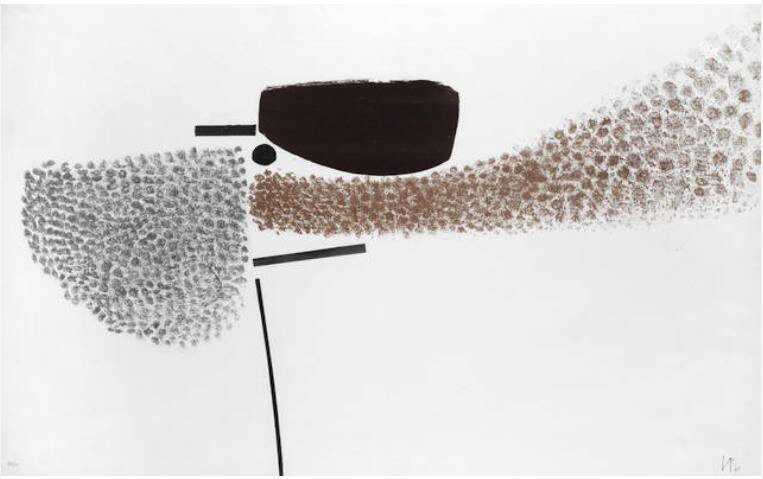Victor Pasmore
Victor Pasmore
Points of Contact No.2 (Lynton 3), 1965
Lithograph printed in colours
58.4 x 90.8 cm
23 x 35 3/4 in.
Victor Pasmore (1908-1998) was born in Surrey, England; he was initially known as both a successful representational painter of still life and landscapes, who later became a pioneering Abstract artist, producing collages, constructions and paintings that were some of the most revolutionary paintings in Britain at the time. Pasmore attended evening classes at Central School of Arts and Crafts from 1927, while working as a local government officer, experimenting with art styles reflecting developments in art in France since the 1880s.
After experiments in lyrical abstraction in the early 1930s, Pasmore began to experiment with abstraction more thoroughly from 1947 onwards with the support of Kenneth Clark. His earliest new abstract experiments used linear forms and collage but in 1952 and in parallel with the work of Kenneth and Mary Martin, became rigorously constructivist, with some works as three-dimensional wall-reliefs in wood and perspex. Teaching at the Central School since 1949, he became Head of Painting at King’s College, Durham University in 1954, staying till 1961, when he was able to devote himself to painting full-time.
In the 1960s the geometry softened, introducing curved lines and edges, and bright colors blossoming in the 1970s and later into lyrical abstract compositions of points, wandering lines and planes of bright colors against his habitual white backgrounds. These transitions were inspired by his relocation to Malta in 1966, where he resided until his death.
Retrospective exhibitions of Pasmore’s work were held in at the ICA (1954), the Cambridge Arts Council Gallery (1955) and he represented Britain at the 30th Venice Biennale in 1960, with an exhibition that toured to Paris, Brussels, Amsterdam, Bochum, Belgrade, Oslo and Copenhagen. In 1964 he was awarded the Carnegie Prize. He represented Britain again at the 8th Sao Paulo Biennial in 1965 in the same year as his retrospective at the Tate Gallery, London. Today, his works are in included in the collections of The Museum of Modern Art in New York, the Yale Center for British Art in New Haven, the Deutsche Bank Collection and the Tate Gallery in London.
Please contact us for more information on work by Victor Pasmore.

